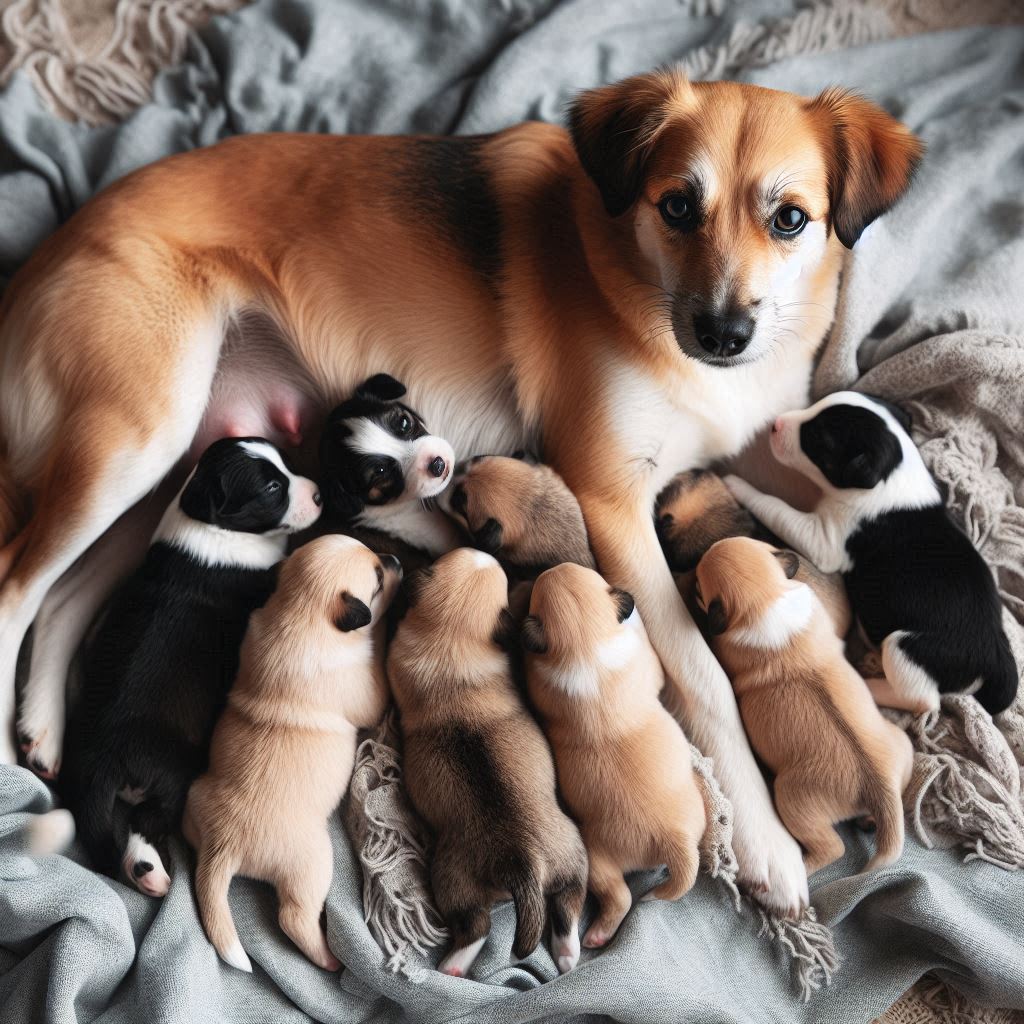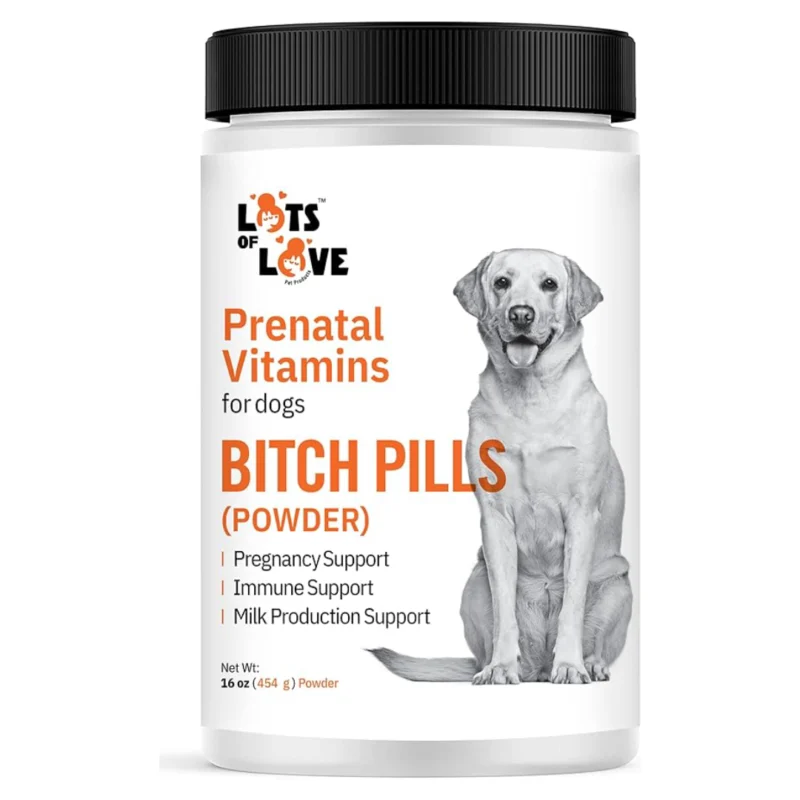Preparing for whelping can seem overwhelming if you aren’t sure what to expect or what essentials you might need. Familiarizing yourself with the whelping process and planning for this procedure will help make the experience a lot smoother for you and your dog.
The Very First Steps
One of the first steps for ensuring a successful whelping experience is to take proper care of the mother dog during her pregnancy period. Caring for a pregnant dog includes prenatal checkups and making sure she receives proper nutrition through her diet for which you can include different supplements also in her diet. Prenatal vitamins for dogs can help cover nutritional gaps in their diet and help support the needs of developing puppies. Meeting the nutritional requirements of your pregnant dog is essential for a healthy pregnancy and puppies. This can also increase milk production in the female dog.
Estimating Your Dog’s Due Date
Many owners want to know when they can expect their new puppies to arrive. If you know when your dog ovulated, you can get a pretty good estimate of when she will give birth. If you aren’t sure when your dog got pregnant, you need to consult your veterinarian.
Dogs are pregnant for about 63 days. The gestation period is measured from the day your dog ovulates to the day of whelping. Using a canine whelping calendar can help you estimate your dog’s due date. Keep in mind that 63 days is an estimate. The gestation period of dogs can range from 58 to 68 days.
Preparations you need to do for the Whelping period
One of the best methods of ensuring a successful whelping experience is to be prepared. To keep your dog comfortable during whelping, it’s a good idea to set up a whelping box. Whelping boxes are designed to provide a safe and comfortable area for the labor, as well as a secure place for the puppies after they are born. Whelping boxes are available in a variety of materials, or you can build your own.
How to Set Up a Whelping Box
When buying or making a whelping box, there are a few guidelines to keep in mind. The box should give your momma dog enough room to stretch out in, as well as enough room for all the new puppies. After she gives birth, she will need her puppies within reach, so making sure the box isn’t too large is also important. The box should allow the momma to easily enter and exit, but it should be tall enough that her puppies can’t wander out.
Another guideline to keep in mind is cleanliness. You’ll need to make sure the whelping box can be easily cleaned. Putting a plastic sheet underneath the box will help keep things clean. You can also line the box with newspaper or puppy pads to help make cleanup easier.
You should set up the whelping box in a warm, quiet location. It’s a good idea to get your dog accustomed to the box before the day of whelping. Giving your dog a few weeks to get comfortable with the box will help ensure she uses it when it’s time to give birth.
Whelping Supplies
In addition to the whelping box, you’ll need to have all your whelping supplies ready ahead of time. When your dog goes into labor, having the right supplies on hand will save you from a lot of stress.
Here are some supplies you’ll need on hand:
- A thermometer to check your dog’s temperature before whelping
- Clean medical scissors to cut the umbilical cords
- Newspaper or puppy pads for easier cleanup
- Unwaxed dental floss to tie off the umbilical cords
- Clean towels for the newborn puppies
- Paper towels for cleanup
- Medical exam gloves
- Iodine for the cut umbilical cord
- Watch, notebook, and pen to keep track of what time the puppies are born
- A puppy/baby scale in ounces to make sure the puppies are gaining weight
- A heat source (heat lamp, heating pad, or hot water bottle) to keep the puppies warm
- Puppy ID bands for identification
- A milk replacement, in case the mother is unable or refuses to nurse her puppies
- Phone numbers of your veterinarian and an emergency vet hospital for questions or concerns
Signs of Labor You may Notice
A few days before whelping, pregnant dogs may stop eating. “Nesting” is also common before whelping, so your dog might start tearing newspaper or blankets to create a “nest.” Another warning sign of labor is that the mother’s temperature will drop, and she may start to pant heavily. You should start taking your dog’s temperature 10 to 14 days before her estimated due date. Vomiting can also be a sign and she may need to urinate more often. When her temperature drops to 99 degrees Fahrenheit or even lower, she will likely go into labor within 24 hours.
Whelping
It’s important to educate yourself on the whelping process, the warning signs of labor, and also your role during labor. Your veterinarian is a good resource for these types of questions. In most instances, dogs don’t need assistance during whelping, and they deliver with no issues. However, you may need to step in and assist if necessary. If you notice any signs of distress or if you're unsure about anything during the whelping process, don't hesitate to contact your veterinarian for advice. It's always better to seek professional help early if there are any concerns.
Here are some situations in which you may need help:
- If your dog has strong contractions for more than 45 minutes without a birth, or if more than 2 hours pass between puppies, you should call your veterinarian
- Watch for any signs of labor complications, and call your veterinarian if you’re concerned. Shivering and trembling are both signs of complications
- When the puppies are born, they will be enclosed in a placental membrane. The mother will generally tear off and possibly eat the membrane. If she doesn’t, you will need to remove the membrane so that the puppy can breathe
- The mother will typically sever the umbilical cord. If she doesn’t, you will need to cut the cord (approximately 1 to 2 inches from the puppy) and tie it off with unwaxed dental floss. You should also take iodine and wipe off the puppies’ abdomens to prevent infection from entering through the umbilical cord
- You’ll be responsible for counting the placentas and ensuring she delivers them all. A retained placenta can cause complications, so this is an important step in the whelping process
- After each puppy is born, you should keep an eye on it to ensure it is nursing and breathing normally. Your next steps involve taking care of those newborn puppies!
- You’ll also need to keep an eye out for symptoms of eclampsia, which typically appear within the first 40 days after giving birth.
Whelping is an exciting time, but it can also be nerve-wracking, especially if this is your first pregnant dog! Educating yourself, talking with your veterinarian, and having the essential supplies ready before whelping will all help make the process smoother.
At Lots of Love Pet Products, we find and develop pet healthcare supplements, including breeding, pregnancy, and whelping solutions. We can help promote the health of your stud, momma, and puppies!
You can buy these online at our Amazon store.

 DOG BREEDING SUPPLEMENTS
DOG BREEDING SUPPLEMENTS DOG DIGESTIVE SUPPLEMENTS
DOG DIGESTIVE SUPPLEMENTS EYE & EAR DROPS
EYE & EAR DROPS SKIN & COAT SUPPLEMENTS
SKIN & COAT SUPPLEMENTS CAT SUPPLEMENTS
CAT SUPPLEMENTS

